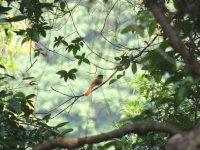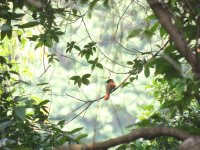earlytorise
Well-known member
I took these two photos in Hong Kong yesterday. It seems to me that the wings are rufous enough to ID the bird as Amur Paradise Flycatcher and not Japanese.
However, would it be possible for 'overexposure' on a photo to make the wings on a female Japanese look 'more rufous'? (The photos are NOT edited.)
This question concerns photography more than anything else, but I suppose people with experience dealing with difficult IDs will know a bit about it.
Thanks and cheers!
However, would it be possible for 'overexposure' on a photo to make the wings on a female Japanese look 'more rufous'? (The photos are NOT edited.)
This question concerns photography more than anything else, but I suppose people with experience dealing with difficult IDs will know a bit about it.
Thanks and cheers!
Attachments
Last edited:






